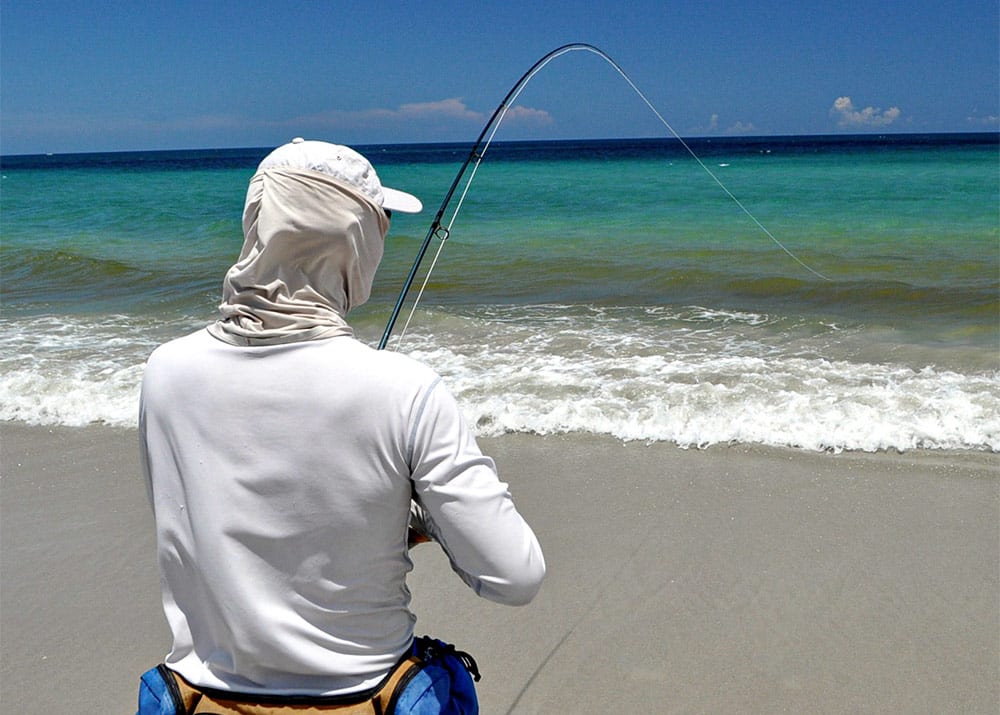
Fly fishers have taken to just about every fishery in salt water, and it’s no longer an oddity to see anglers with fly rods on beaches along U.S. coasts when conditions allow it. Florida beaches are particularly fly friendly, and there’s action year-round with a wide array of species, of which I rank snook and tarpon the number one and two targets.
In the Sunshine State, clear and warm summer waters, prevailing light winds, and a slight groundswell (with the exception of tropical storm weather) allow for exciting sight fishing on foot, which is practiced on the Gulf Coast roughly from Tampa to the south, and from Daytona Beach on southward on the Atlantic side. It’s not a coincidence that, although snook have extended their range in recent years, they remain more plentiful and reliable in the southern half of the state. Resident tarpon do as well, but their annual migration in late spring and summer provides opportunities for fly rodders in the northern reaches of the state.
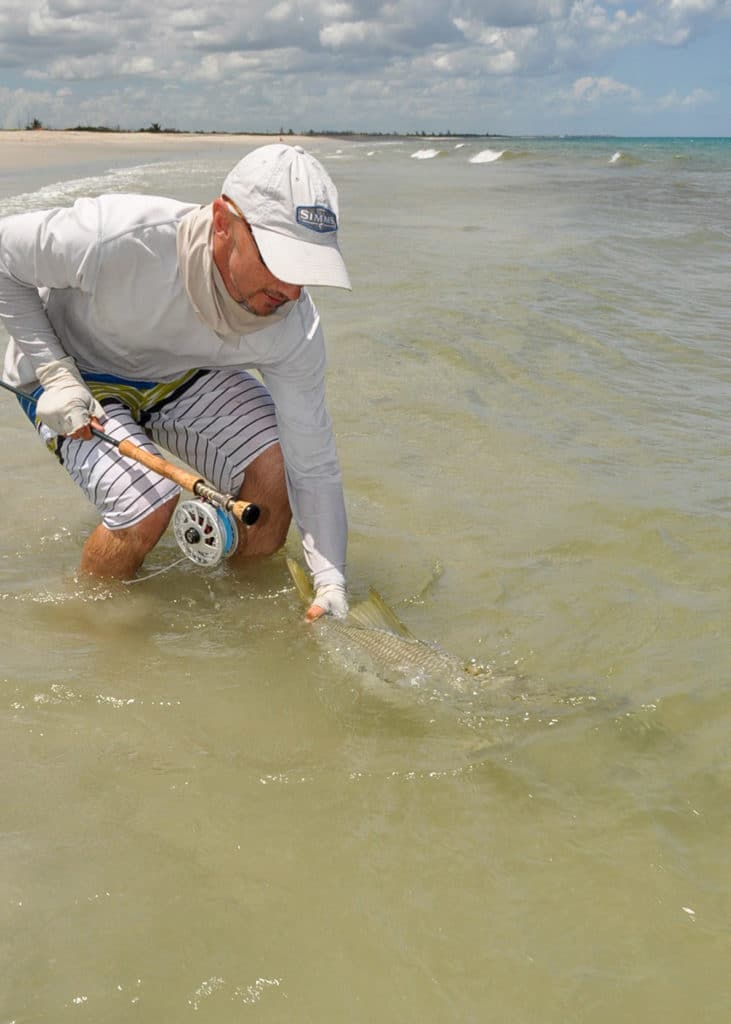
In general, more snook and tarpon of all sizes are hooked on fly early or late in the day, when light levels are lower, making sight fishing along the beaches challenging to nearly impossible, save for times when the fish are busting schooling baitfish.
In the Florida beaches I hunt — from Vero Beach to Jupiter, baitfish attacks happen more often during summer mornings and late afternoons, but midday sunlight from 10 a.m. until 5 p.m. allows you to spot schools or even single fish in the surf, sometimes practically at your feet, during the right tide. It is far more exciting, although pretty challenging at times, to present your fly and watch that fish eat.
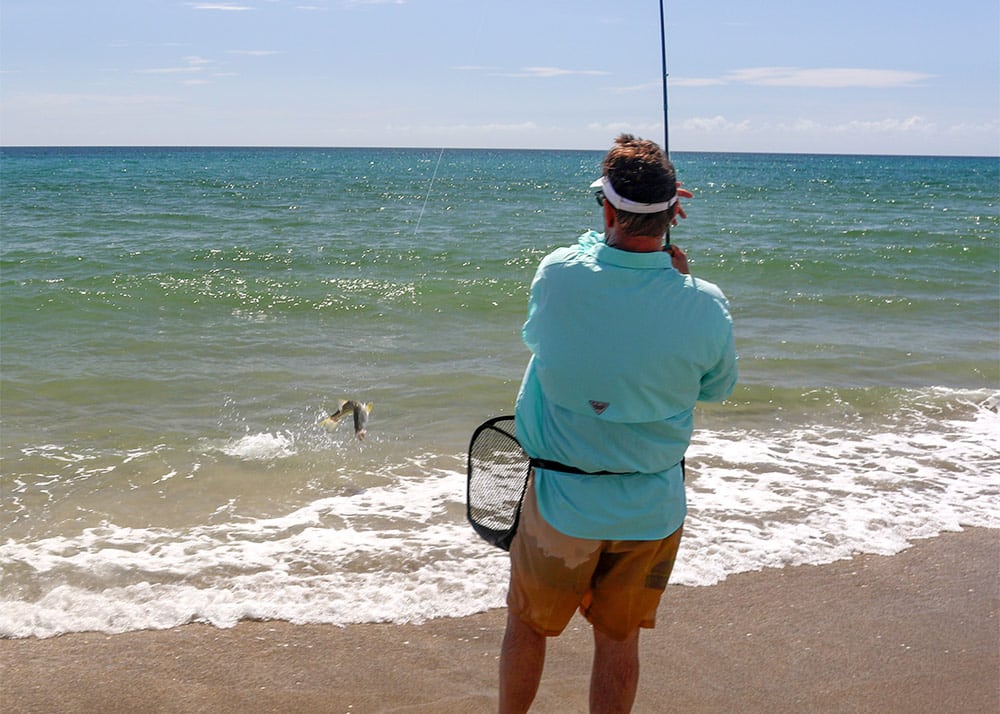
Main Targets
Though snook don’t run like bonefish when hooked, most of the specimens you find on the beach are bigger and strong fighters. Their first run toward deeper water is always a good one, then they tend to slug it out — often making a few jumps — when you get them back in shallow water.
When the big females come out of the inlets and passes during the summer spawn, you are likely to get shots at 10- to 30-pounders. Smaller males may be swimming in packs, with or without a bigger female. You might instead spot a big female alone (the ultimate challenge), or a group of three to five of 15 pounds or more. That’s when you need to steady yourself and focus on making a good initial presentation, because the wariness of snook increases with size and life experience, and the big linesiders rarely give the angler more than one good shot.
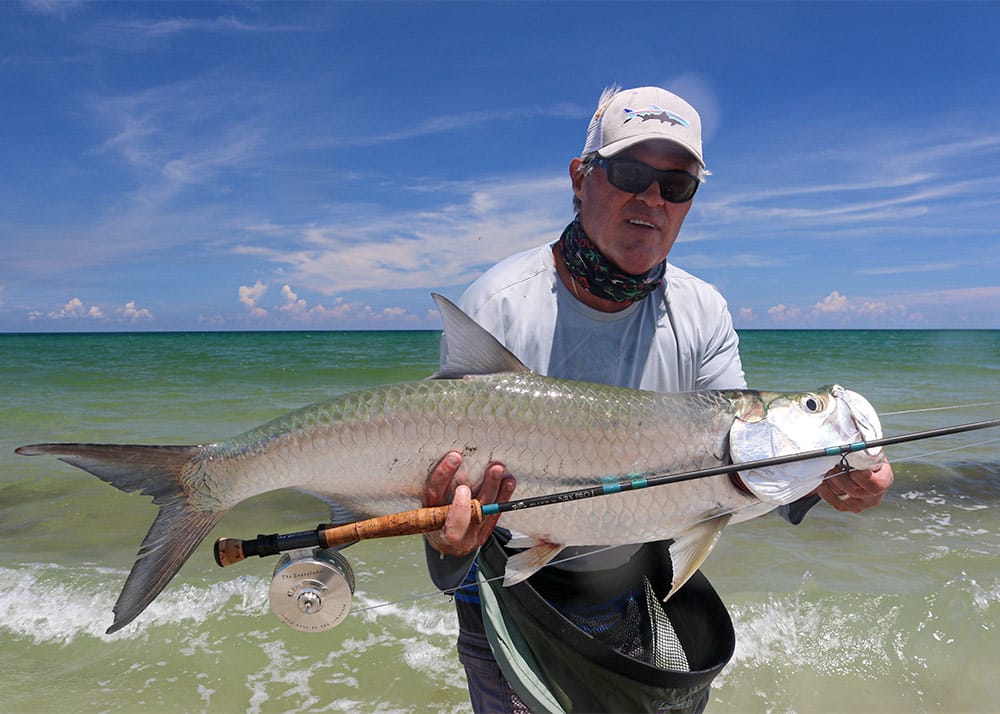
Pick Your Days
The best sight fishing for snook usually takes place from June through late August. Sunny days and winds under 10 knots temporarily interrupted by afternoon thunderstorms are typical summer conditions along Florida’s shores. The water stays clear, there is little in the way of wind chop or swell, so it’s easy to manage your fly line and frequently detect fish to target.
If I had to pick one month, August would be it. However, September brings the major push of the fall baitfish run, which triggers some exciting feeding activity. Where I fish the most, in southeastern Florida, bay anchovies (also called red minnows) show up in August and attract both tarpon and snook. The most recent red minnow run was a little weaker than the previous few years, but it still attracted tarpon up to 100 pounds to the trough just past the point where the water meets the sand. The minnows hug the trough, and tarpon come right in to attack the pods with abandon. Snook come to the feast too, joined by big ladyfish, jacks, blue runners, and the occasional bonito, which are a blast to hook into.
Pilchards (scaled sardines) are another plentiful summer prey along the beaches, and silver mullet arrive in late August and are moving south in big schools by mid September. By late September and early October, despite the abundance of forage, the number of fishable days for fly anglers quickly diminishes, as strong north to northeast winds in the 15- to 20-knot range begin to blow.
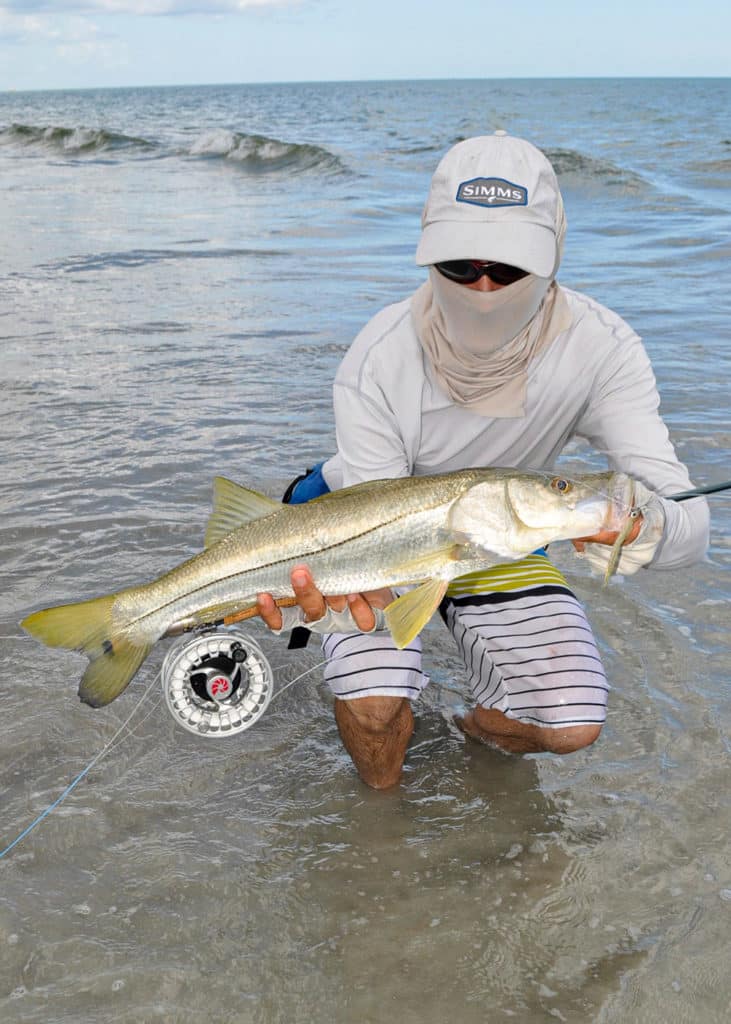
Best Tides
I used to be more concerned with tide phases on the beach, but I have figured out which beaches in my region produce on any tide. Some are shallow enough to allow wading out to knee-deep or thigh-deep water, even at dead low tide. And more times than not, snook and tarpon will be traveling in that water. The deeper beaches fish well on lower tides, but by high water it may be nearly waist-deep in the trough, so you won’t spot fish as readily. The snook tend to be nearly white with light green backs in surf water, and blend in with sand bottom quite well. You will only see the fish that swimming near the surface. Tarpon are “up feeders” and tend to swim higher in the water, and don’t seem to search the sand for baits such as baby whiting and croakers as snook do.
Some beaches I fish are devoid of life at slack low tide, but come alive as soon as a rising tide gets cranking. Snook begin to move up from deeper water to feed. But I do prefer a high falling tide in most places. It seems to draw in more fish, and I like the fact that I can start casting from dry sand and then work my way out to the first bar or in the trough, depending on the beach, to stay in the travel lane of the fish. Many times, I have stood in water just over my knees — some 25 yards off the sand — to cast at fish lurking at that same depth or swimming between my position and the beach. In that situation, not many fish get by me without a presentation.
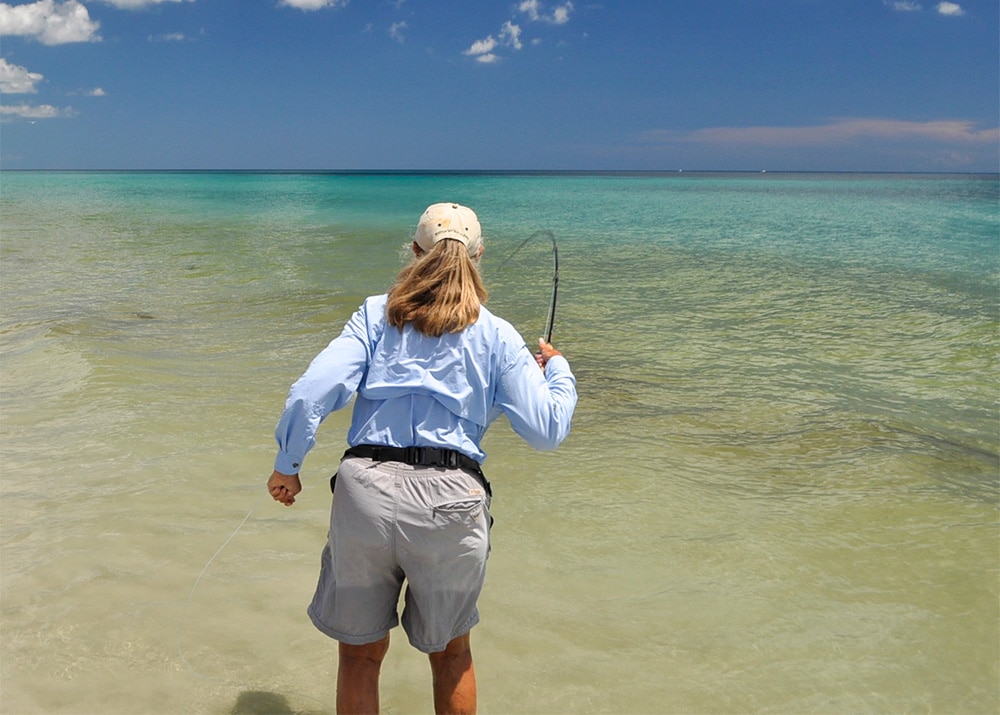
The Presentation
If you have sight fishing experience, you will love fly fishing the beaches. In clear surf water, snook and tarpon are skittish. Keep in mind that, in the summer, snook are probably in some phase of their spawning. Recovering from spawning, or just plain worn out, the big females may not be ready to feed then. But they will eat at some point, and if you are on the beach when they decide it’s time to take in some calories, you are in for a treat. Watching a snook of 20 pounds or more track down and swallow your streamer is an experience not soon forgotten.
As with any cruising fish, you must quickly access the depth and rate of speed of a snook in order to put your fly in the sweet spot. Fish that are swimming fast in the middle of the water column are long shots. They are traveling, perhaps having just left the nearest inlet, or heading back to it for more “socializing.” Such fish will take a fly occasionally, so they’re still worth a shot, but don’t expect them to go out of their way to eat your offering. You must get your fly in the magic zone, as veteran tarpon angler and author Bill Bishop calls it, the 2- to 3-foot cube in front of the fish’s face.
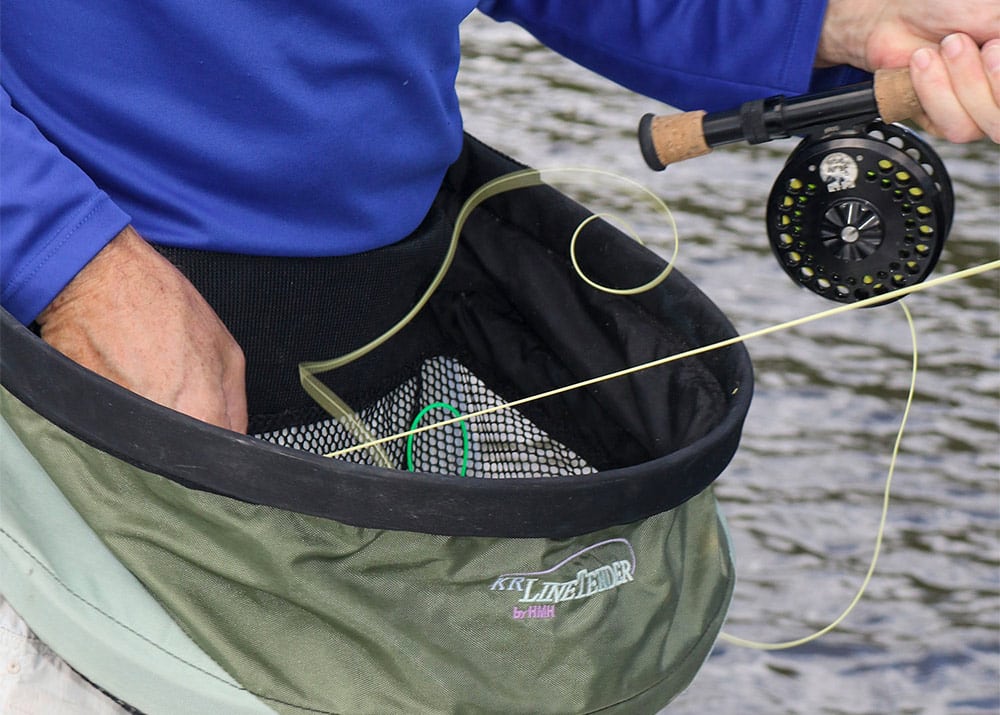
Dealing with Waves
The biggest hurdle for fly anglers fishing the beach is waves, whether wind-blown or ground swell from a distant low-pressure area. Seaweed — either floating or suspended in mid water, which sometimes gathers en mass along the beach, is a close second.
I rarely cast a floating line. It too easily gets tossed around and carried to shore by a cresting wave. And when seaweed is around, a floating line funnels the stuff right down to your leader and fly.
A swell under 3 feet tall is fishable. I don’t bother to fly fish in anything bigger. And the longer the period between sets of waves, the better. It gives you a break between waves, and time to spot fish and cast. All surfing sites, such as www.magicseaweed.com provide hourly charts predicting both the swell height and period.
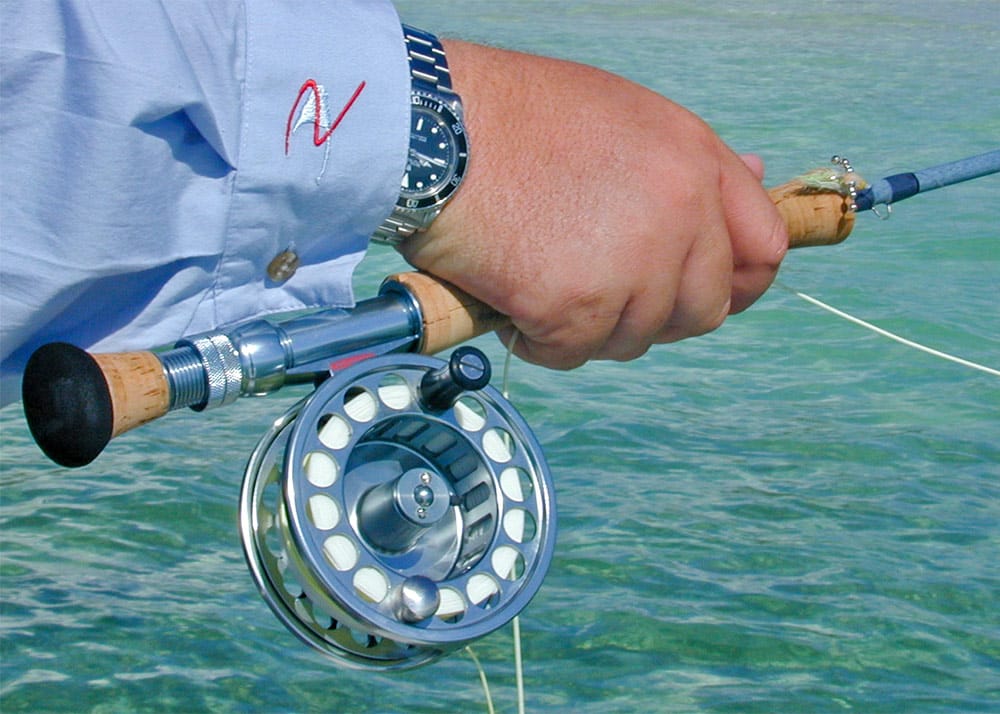
Even with a slow-sinking line (my favorite is a clear, intermediate sinker), it helps to cast in a manner that minimizes the effects of a swell. Casting straight into the wind and waves allows you to stay in contact with your fly and fish it correctly. But much of the time, you spot fish down the beach from your location, swimming parallel to the sand. These are ideal oncoming shots that result in more strikes, but with a swell, it’s best to cast at the fish and make a reach with my rod tip extending seaward. Such a cast lays your line in a better position. The reach is made after you stop your rod on the delivery, so extending the rod tip in this manner does not affect accuracy. What it does do is lay the line in the water seaward of the fly so that the next wave does not carry the whole works toward the beach as quickly.
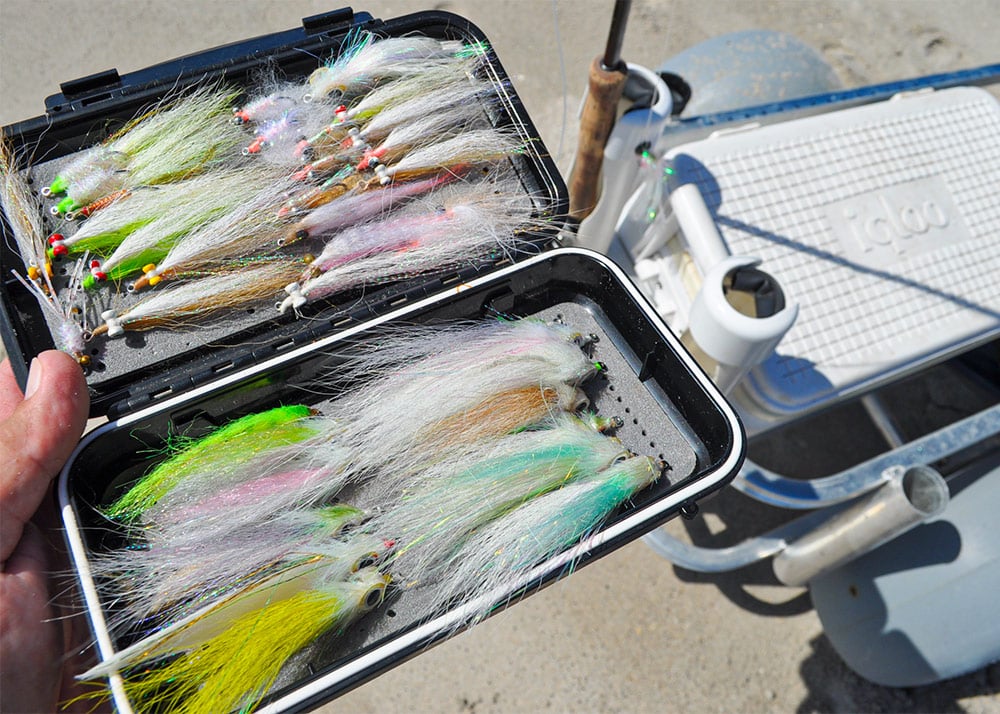
Right Tackle and Flies
In general, a 9-weight serves best for snook, but I choose a 10-weight for bigger streamers or when big females are in the mix. An 11-weight is perfect for surf tarpon in the 40- to 80-pound class. Keep in mind that both snook and tarpon run hard and fight to the finish in the surf environment. They reach deep water and slug it out. This is no place for much lighter fly tackle. Bite tippets can range from 20- to 40-pound for snook, and 50- to 60-pound for tarpon.
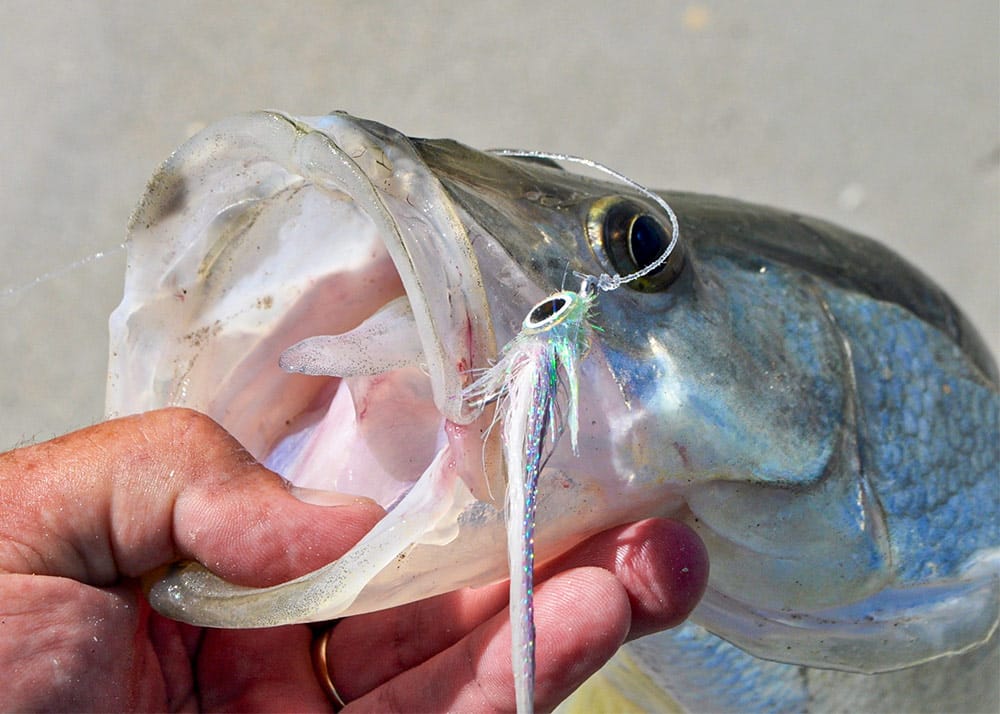
Streamer flies imitating bay anchovies, scaled sardines and finger mullet are standards for the surf fly box. All-white patterns or those with a grey or olive back are ideal. I tie a bit of pink flash in mine, to look like the iridescence of real thing. Clouser Minnows in tan-over-white or chartreuse-over-white get the nod when snook are cruising right on the bottom. They are a great imitation for the small whiting that snook relish. Lefty’s Deceivers, EP Mullet, and many other baitfish patterns are also great choices for both snook and tarpon. With fussy, smaller snook, I have had success with Gotchas tied on size 2 hooks, a great bonefish fly. I tie them with medium dumbbell lead eyes to make them sink fast and kick up puffs of sand. I suspect the fish take them for small crabs.
A stripping basket is a definite must. Pick one that drains quickly for times when you wade out above your knees. Even when you are casting from the sand in a placid surf, the basket keeps your line clean, so it shoots better.
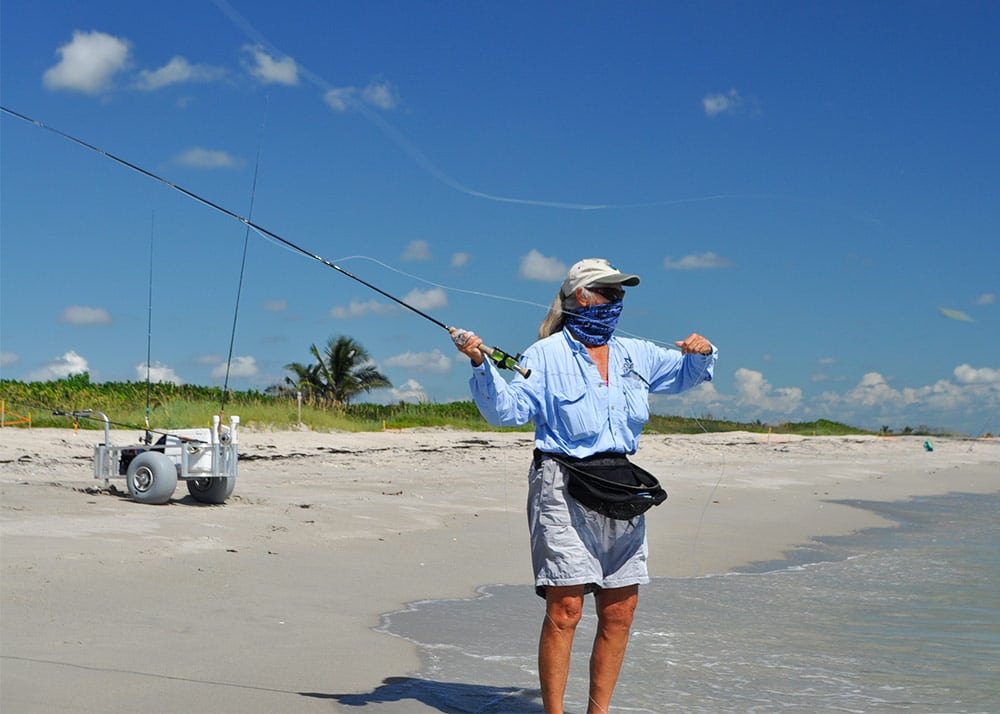
Best Days
With some experience you will recognize when the fish are “ripe for picking.” Baitfish schools are pinned tight to the beach, and rather than simply racing along in schools, the snook face the beach, move into the wash, and make occasional raids in the bait. Your fly will normally get the bite in this situation, but be prepared for times when the fish are super fussy. Too much bait can be a curse. At times like that you might try a dark streamer, something that “stands out in the crowd.”
When tarpon slow down, and roll happily at the surface (typical at first light or dusk) they are most likely to eat flies. Those that are sprinting down the beach can be impossible to coax.









